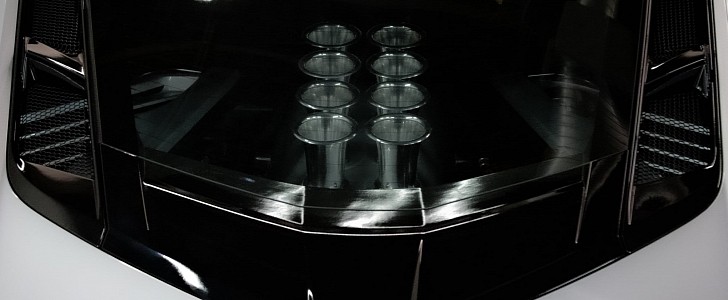Also known as intake trumpets, velocity stacks were developed for purposes that don’t include the engine bay’s appearance. Put simply, smoothing the flow of air allows more of it to flow through the intake system for bigger bangs in the combustion chambers. Add a serious carburetor to the mix, and it’s easy to understand why these bad boys were so popular back in the olden days of road-legal and racing cars.
What happened to velocity stacks, you ask? As it happens, you can blame Bosch for that. The Mercedes Gullwing set the stage for mechanical fuel injection in the 1950s as the more efficient and powerful alternative to carburetors, but that’s only half the story. American company Bendix is credited with rolling out the first electronic fuel injection system in the 1957 AMC Rambler, and by the mid-1990s, EFI became the norm in the U.S.
Now let’s take a look at the small-block V8 that equips the 2020 and 2021 Chevrolet Corvette in Stingray flavor. Codenamed LT2, the 6.2-liter engine features direct injection, variable valve timing, and active fuel management, technologies that render the carburetor useless. Now it’s high time to read the headline and pose a question. Why, in the name of all things holy, would anyone fit velocity stacks on top of an engine that doesn’t need them?
Designed by Custom Cre8ions and available to pre-order at $1,495 with $750 down, “this engine cover is for appearance only. The velocity stacks are not functional.” If it were my hard-earned cash, I would veer away from those glorified drink holders and get a more useful option on my ‘Vette.
Adding insult to injury, the fake velocity stacks trap unwanted heat and add unwanted weight over the sports car’s rear axle. You also have to imagine how it would be like to show up with a riced-up Corvette at Cars & Coffee.
People in the know can clearly tell that someone is faking performance for validation, but worse still, those who aren’t in the know will ask the owner a rather awkward question. “Are those metal shot glasses or what?”
Now let’s take a look at the small-block V8 that equips the 2020 and 2021 Chevrolet Corvette in Stingray flavor. Codenamed LT2, the 6.2-liter engine features direct injection, variable valve timing, and active fuel management, technologies that render the carburetor useless. Now it’s high time to read the headline and pose a question. Why, in the name of all things holy, would anyone fit velocity stacks on top of an engine that doesn’t need them?
Designed by Custom Cre8ions and available to pre-order at $1,495 with $750 down, “this engine cover is for appearance only. The velocity stacks are not functional.” If it were my hard-earned cash, I would veer away from those glorified drink holders and get a more useful option on my ‘Vette.
Adding insult to injury, the fake velocity stacks trap unwanted heat and add unwanted weight over the sports car’s rear axle. You also have to imagine how it would be like to show up with a riced-up Corvette at Cars & Coffee.
People in the know can clearly tell that someone is faking performance for validation, but worse still, those who aren’t in the know will ask the owner a rather awkward question. “Are those metal shot glasses or what?”










